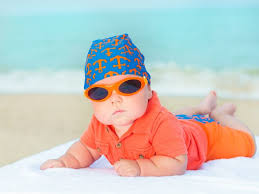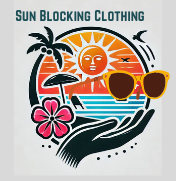Should kids wear sunglasses? Of course, they are cute in sunglasses. But do they really need them?

How Your Eyesight Benefits From Daylight.
Do you know how natural outdoor light can help in the maturing vision of your young children? What are the studies showing as outcomes of years of being raised in the natural environment of where they are living?
Since kids’ eyesight is usually neglected, unless there is a problem, they are often overlooked in research as well. What is the point in researching something where there is not problem? The warnings are few.
Now that it is your child we are talking about, and as more information is available, this may help. Give you some basic ideas about helping your kids. Some tips for protection and guidance with their developing eyesight.
Awareness of Safe Amounts Of Natural Light
Kids have often had more sun exposure and sun damage because we have not paid attention to the whole question. It is not a matter of being indifferent and not caring. We just didn’t know.
When your kids are young, their eyes aren’t fully developed. This plus the fact that we are sometimes unaware of how long we have been out. We just lose track of time. So the first thing that you need to do is to become aware of how long your young child is in the sun, or out in natural lighting.
As there is so little history of young kids, actually babies without issues, healthy kids often are not as followed up on. What or when did they become susceptible to eye diseases?
So it is possible that something that happened when they were 5 months old made an eye disease develop when they are 15. When eye maturity works as it should, it gets little attention.
How Much Natural Light Do Kids Need?
New evidence is suggesting that if children spend more time outside, exposure to daylight may reduce their risk of developing nearsightedness.
Research shows there has been an increase in the percentage of Americans ages 12-54 who are dealing with myopia. The number has increased from 25 percent in early 1970 to 41.6 percent today.
Myopia is also known as nearsightedness or not being able to see things far away. The American Academy of Ophthalmology and the National Eye Institute predict a whopping half the world’s population will be “nearsighted” by the end of 2050.
Good vision for long distances was important for our ancestors long ago. They had to depend on their eyesight to hunt for food. To watch for the enemy.
Our ancestors spent the majority of their waking hours in the sun.
As those without good long-distance eyesight would not have been able to hunt and eat they would have died off long ago. Myopia would be a thing of the past if it was strictly genetic.
Our young kids are developing myopia at an earlier age than ever before. What is different today, compared to several hundred years ago or even 45?
Could It Be Genetics? Or Lifestyles?
Genetics can usually be blamed for the rise in myopia. But what is even a bigger culprit? Could it be just not getting enough time outdoors in the natural light?
Computers, iPads, television, reading, and studying consume a lot of our time. This gives us less time that our eyes (and our bodies) are spending outside.
It certainly doesn’t help when schools cut back on our kids’ recess time.
Dr. Christopher Starr, who is an ophthalmologist, at Weill Cornell Medical College, tells us that our kids need at the very least 1 to 3 hours outside. This sounds like not enough time to me, but this time I will bow to education and degrees.
This is in addition to school recess time. OK, now we get in more agreement. We played outside a lot growing up and so did my kids. With the internet, I can see the temptation to spend more time there and less outdoors in the sun.
Dr. Starr explains that dopamine is known to slow down eye growth. Light stimulates the release of dopamine. This allows dopamine to prevent the elongation of our eyes.
When there is a lack of dopamine, the eye becomes more elongated. This results in nearsightedness.
Importance Of Lifestyle Changes On Myopia
Researchers reckon that bright outdoor light helps children whose eyes are developing. Their eyes maintain the right distance between the lens and the retina. This keeps their vision in focus.
Dim indoor lighting doesn’t seem to deliver the same result.
As a result, when kids spend too many hours inside, their eyes don’t grow correctly. The distance between the lens and retina becomes too long. The results in making far-away objects look blurry.
This does not mean that kids need unlimited time outside in the natural light. However, an hour every day would be good, provided it isn’t during the more extreme sun exposure hours. (10 AM till 4 PM during the summer.)
This is where you as a parent have to be aware of when the kids are out, and how long.
Changes From Schedule
This report from the American Academy of Ophthalmology suggests:
“More Time Outdoors May Reduce Kids’ Risk of Nearsightedness,”
More studying and reading seemed to result in more cases.
When both parents were myopic, kids were at higher risk of developing myopia themselves. The chances increased if they did not play sports.
The kids who had no myopic parents, and spent a lot of time outside had the lowest risk of all youth!
When allowed 80 minutes of recess during the school day, fewer kids became nearsighted when compared to kids who weren’t required to spend recess outdoors.
This raises the case about the lack of recess with the parents who are already concerned. A full school day without recess?
Finally, one study showed that for each additional hour, children spend outdoors per week, their risk of being nearsighted dropped by 2 percent.
It Is A Balancing Act
Youngsters don’t have to play outdoor sports to get some healthy exposure to natural light.
Of course, they should not stare at the sun to get the benefit of daylight. Just general exposure with outdoor time, and wearing their UV-blocking sunglasses after an hour or so outside.
Studying and reading do not lead to nearsightedness, being indoors does. Do your kids need an outdoor study hour? It is a reasonable suggestion.
Just to remind you, your baby does need sunlight to help his eyes to mature to give him strong healthy sight. Direct sun is never recommended for babies younger than 12 months. They should always be in the shade. The outdoor light is enough for babies to have good eyesight.
At 12 months you can use sunscreen to protect little ones’ skin and it is safer for short times in the sun. However, for your children’s safety, a shady area is preferred to direct sun. This is true for any age.
Outdoors Natural Light, Not Direct Sun Overhead
When we are in the sun without skin and eye protection, we can be damaging our eyes as well as our skin.
Overexposure to UV rays without protective eyewear increases your risk for eye diseases. Eye diseases like cataracts, and growths on the eye or cancer.
These diseases take many years to develop.
For this reason, babies and kids should wear hats and sunglasses as much as possible. Develop the sunglasses habit while they are young.
Sun damage can happen any time of the year, even on a wintery cloudy day. Sun reflecting off the snow can also cause painful damage. This is true for adults as well as kids, and all need to protect their eyes.
To protect your kids, make sure you’re mindful of their time spent outside. Ask them about their eyes every time you stop to lather them up with sunscreen.
Sunglasses, wide-brimmed hats, and breaks in the shade are all great ways to help offer eye protection from the sun. Good habits to develop while your child is young.
If you notice a lot of blinking, rubbing, squinting, tugging, or redness, your child may be experiencing eye sunburn.
Make sure they spend some time away from the sun and that their eyes remain covered to help reduce soreness. Cold compresses are one way to help relieve pain.

Sami’s Take On Do Kids Need Sunglasses?
In the light of research, kids do need sunglasses. They are in the sun and direct sunlight isn’t safe for them. When I remember all the time my exposure to the sun was ignored, I am surprised I can see at all.
To have my kids and grandkids get older with better eyesight would be a very good thing.
As age and experience are all I have to evaluate this information about our eyes with, here are my ideas about how important protecting our kid’s eyesight:
When I remember how my grandparents aged, and the vision issues they had. Then add my parent’s experiences that I am aware of, my genetics were good for vision throughout life.
However, Bible reading was the main reading for my grandparents. TV and newspapers as well as the Bible for my parents. They wore glasses to help them read.
Now all the long hours in front of computers and TV with a love of reading, I feel I would have had better eyesight now if cataracts were not there.
With better care for my eyes, I might have skipped the retina surgeries I have had. Old sun-damaged eyes are not as strong as those that have escaped the sun damage.
As we became aware of the dangers of the sun, we started taking better care of ourselves.
Will you add this information to your knowledge and come up with a plan to help your kids have less sun damage as adults?
Disclaimer
The information in this report is not intended to replace your Doctors advice. It is simply to make you aware that there are some things you can do to protect your family’s eyes.
